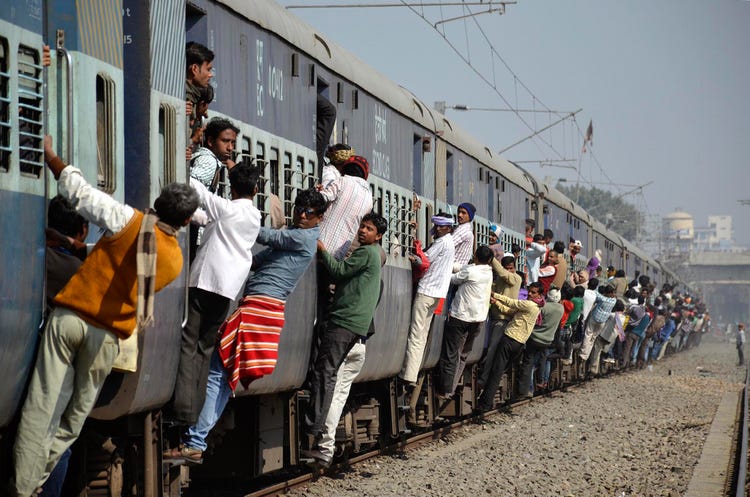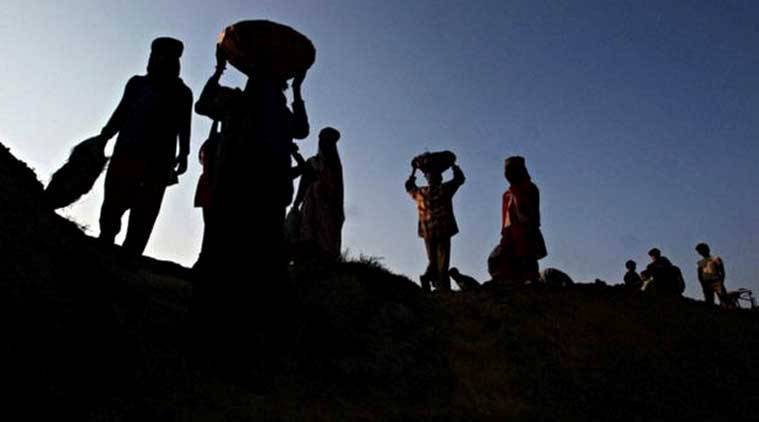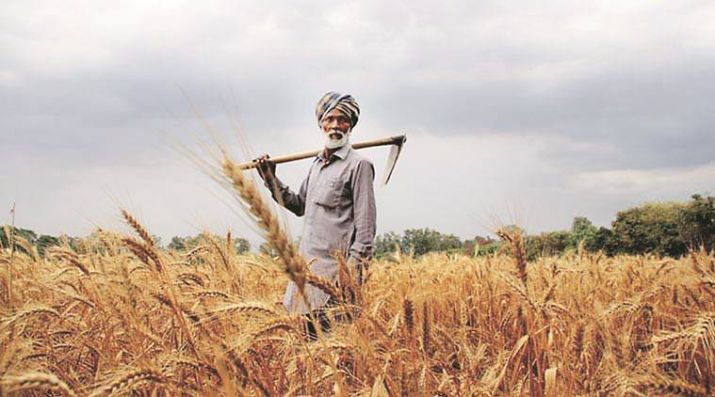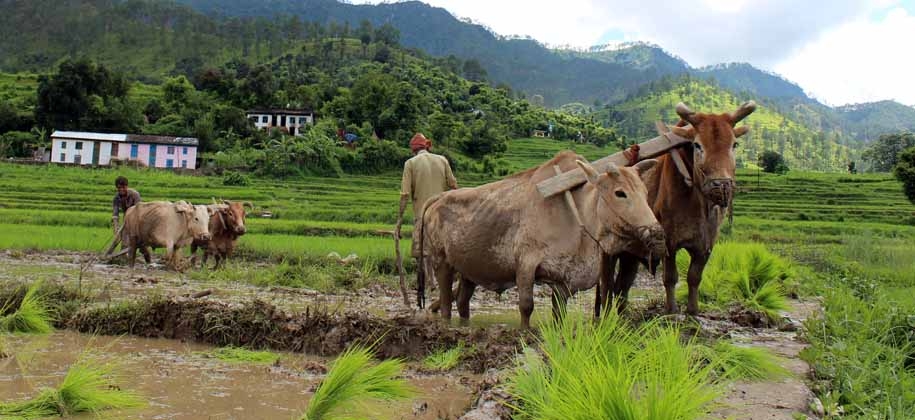Social segregation, labour market discrimination and barriers to accessing the most basic services plagued the livelihood and everyday life of migrants belonging to SC, and, ST categories revealed a study based on an analysis of Census data and research studies by India Migration Now, a Mumbai-based non-profit.
According to a study based on an analysis of 2011 Census data and research studies by India Migration Now, a Mumbai-based non-profit, poverty and lack of opportunity forced 93 million Indians from disadvantaged castes and tribes to migrate to other areas within their states in the hope of securing education or employment.
However, social segregation, labour market discrimination and barriers to accessing the most basic services continued to plague their livelihood and everyday life, revealed the study.
Migration in India
Migration is the movement of people in space, often involving a change in the usual place of residence; internal migration is such a movement within national boundaries where people leave their native place to move to near-by towns and cities or places of better opportunities in a hope to improve their livelihoods.
In India, according to the Economic Survey of India 2017 estimates the magnitude of inter-state migration was close to 9 million annually between 2011 and 2016, while Census 2011 revealed that total number of internal migrants in the country (accounting for inter- and intra-state movement) was at a staggering 139 million.
Uttar Pradesh and Bihar were the biggest source states, followed closely by Madhya Pradesh, Punjab, Rajasthan, Uttarakhand, Jammu and Kashmir and West Bengal; the major destination states are Delhi, Maharashtra, Tamil Nadu, Gujarat, Andhra Pradesh and Kerala.
Moreover, as per data from Census 2011, about 16% of the total intra-state migrants in India belonged to the SCs and 8% to the STs, almost equal to their share in the total population. This proportion had remained constant since 2001, when SCs made up 15.7% and STs 8% of intra-state migrants.
Migration in India – Benefits and Challenges
In August 2019, an IndiaSpend report had highlighted that internal migration, both within a state and across states in India, had the potential to improve households’ socio-economic status, and benefit both the region that people migrate to and where they migrate from.
Despite this, the research also showed, scheduled castes (SC) – castes considered ‘lower’ in the social hierarchy – and scheduled tribes (ST) indigenous tribal populations – benefited less from migration as social discrimination continued to impact them in the places they migrated to.
Moreover, exclusionary government policies often push migrants, from all social groups, to the fringes of cities that have limited civic infrastructure and municipal facilities, which makes migrants prone to poor health and living conditions, as IndiaSpend reported in October 2019.
The impact of such policies on migrants from the SCs and STs was greater, as those belonging to these groups are also some of the poorest in the country, showed an analysis of data from the government’s national sample survey on expenditure in 2011-12, published in the Journal of Social Inclusion Studies.For instance, when migrants move away from their hometowns, they can no longer access the benefits of state-specific schemes such as the public distribution system. This impacts the poorest and food-insecure the most. Those from the scheduled castes and tribes cannot avail of reservations–which try to correct historical discrimination against these groups–in stategovernment jobs and state-run educational institutions when they migrate from one state to another, the Supreme Court ruled in 2018.
How caste impacted decision to migrate
Whether migration leads to accumulation of wealth or not was also influenced by caste, networks, and land possessed, concluded a 2016 study from Beed in Maharashtra, published in the Social Science Spectrum. Families that were only seasonally involved in sugarcane cutting were better off than those involved in the job permanently, the study found.
Also, there were overlaps between a migrant’s social and economic status. People from the general category and Other Backward Classes (OBC) had higher chances of migrating and bearing the cost of migration. The disadvantaged castes were often unable to gain the benefits of migration.
Migration payed off if the worker was from a higher caste, found a 2018 study linking caste and
job market participation among migrants in the slum areas of four Indian cities – Ludhiana,
Ujjain, Mathura and Jaipur.
Labour market and social segregation
A 2018 study in southern Rajasthan by the Aajeevika Bureau, published in the Journal of Interdisciplinary Economics, had found that communities that have been historically at the lower end of social groups were also the most disadvantaged in the labour market.
Over 79% of the migration (mostly men) in the study was inter-state, with Gujarat as the most popular destination. At the destination, the work was disaggregated based on caste, leaving STs no choice but to work at the lowest end of the labour market. Among ST migrants, more than half worked as helpers and about 30% worked as masons, the study found. Other migrants from the ‘general’ category and OBCs performed more skilled tasks.
Migrants from the ‘general’ category had better qualifications for urban job centres, because of the historical advantage of education and are therefore able to find higher-paying jobs in urban areas.
Caste and Women Migrants
Women from SCs and STs often migrate from one rural area to the other because of displacement and loss in the ownership of forest resources, a 2012 study on gender and migration, conducted across 20 states of India by the Centre for Women’s Development Studies, Delhi between 2008 and 2011 showed. Even here, caste played a decisive factor among women in deciding the nature of employment and the nature of migration.Most tribal women were concentrated in the construction sector, lower-caste women in sectors such as brick-making, and OBC migrant women worked as paid domestic workers and seasonal agricultural workers, according to the report.
Of a sample of 1,600 families surveyed in four states, more than three-fourths of migrant tribal women from Chhattisgarh, Jharkhand and Odisha worked as domestic servants while migrant tribal women from Madhya Pradesh were engaged in wage employment, found a 2010 report by the Society for Regional Research and Analysis.
The report also found that long-and medium-term female migration was dominated by migrants from the ‘general’ category, while most tribal women migrated for the short or medium term.
Caste and Emigration
Since the 1970s, when Kerala had high unemployment, it became lucrative to move to the Gulf region to fill the surge in demand for skilled and unskilled labour. However, SC/ST community emigration reduced in Kerala, found eight rounds of the Kerala Migration Survey, conducted by the Centre for Development Studies in Trivandrum.
In 1998, 1.4% of emigrants were from the SC/ST community which reduced to 0.9% in the 2018 survey.The low SC/ST emigration deepens caste inequalities as remittances play a crucial role in Kerala’s economy and the prosperity of its population, according to a 2017 study published in Routledge India.Even when those from the lower castes emigrate, they face discrimination.
As many as a quarter (26%) of 1,500 Dalits from South Asia interviewed in the United States of America had faced physical violence because of their caste, while 20% reported discrimination at their workplaces, according to a survey conducted in 2016 by Equality Labs, a US-based research organisation.
The survey also found that 40% of the respondents were made to feel unwelcome at their place of worship, 40% said they were rejected as romantic partners because of their caste and60% had experienced caste-based derogatory jokes and comments.It was tougher for female emigrants, who often face violence and abuse at destination countries and are unable to reach out for help as many are isolated as domestic workers in households, said Sister Lissy, the founder of the National Workers Movement, a Hyderabad-based nongovernmental organisation that works for the welfare of female emigrants.














